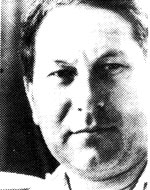Orieli, Zacharyahu (“Zachar”)
Son of Zippora and Michael Orliov. He was born on April 20, 1895, in the city of Melitopol, the region of Tavria, Russia. His parents, who are observant, brought him into a “room” at the age of five, where he stood out as a gifted student, and then moved to high school and graduated with honors. After graduating from high school, he entered the Polytechnic in Odessa, where he excelled in his studies and was active in the life of the Jewish students. As part of this activity, he trained the students in Seder exercises and in the use of cold weapons for self-defense, and with the outbreak of the First World War, in order to protect Jewish refugees who came to the city after being expelled by the Czar’s government from their place of residence. In 1915 he was drafted into the Russian army and after eight months of fighting on the Austrian front he was captured. After hardships and hardships in the German POW camp he escaped from the captivity, managed to cross the front line and reached Petrograd and from there to his parents’ home in the Crimea. After the Bolshevik revolution of 1917, he returned to Odessa to continue his studies in the Polytechnic. During the civil war that broke out in Russia as a result of the revolution, he participated as an active member of the local Maccabi organization. In those days he met Yosef Trumpeldor and was very influenced by his personality. Then he decided to join Hehalutz and immigrate to Eretz Israel. On May 20, 1920, he immigrated to Israel with a group of forty pioneers. He joined the Joseph Trumpeldor Labor Battalion, worked on the Tabgha Tiberias and Tiberias-Zemach roads, and at the beginning of May 1921, at the outbreak of the bloody riots in Jaffa, was sent to guard the Jewish neighborhood of Neveh Tzedek. He also participated in a group of 12 people, most of them from Gdud Ha’avoda, who went to defend a Jewish neighborhood in Jaffa (“Warsaw”), but had to evacuate it and retreat to Tel Aviv. After the riots, he was a small group of young people in charge of protecting Jewish immigrants who arrived in Israel at the Jaffa port. In August 1921, he was one of the instructors of the Haganah to train and train members from all the points of the Yishuv. In the bloody events that broke out in Jerusalem on November 2, 1921, the anniversary of the Balfour Declaration, he and several Haganah leaders went to reinforce the protection of the Jewish Quarter in the Old City. In 1922 he was appointed commander of the Haganah in the entire city. He served in this position until the spring of 1929, when he was seriously injured in an accident and spent six months in a hospital in Jerusalem. During his seven years as commander of the Haganah in Jerusalem, the man with the strong, courageous and honest body stamped his signature on the branch figure and served as a personal example of his comrades as commander and guide. Because of his activity in the Hagana, he was wanted by the British Intelligence in Palestine and therefore was prevented from returning from London after the treatment. He went to Antwerp, Belgium, and from there bought arms and transferred them to the Haganah in Israel. It was not until early 1934 that he was allowed to return to Israel after a tie was closed with one of his friends. He settled with his family in Tel Aviv where he was appointed by the Hagana center to organize the technical department (the brigade commander) whose establishment was decided at that time, collecting maps and sketching them, preparing national plans to protect the settlements and supervising the fortifications in each and every settlement. He participated, among other things, in the early tours of the Haganah commanders to determine the location of Hanita, a “tower and stockade” settlement that was established on March 21, 1938. With the establishment of the Hagana’s national headquarters in the summer of 1938, With the start of the operations of the field companies and the night companies, the need for maps increased, and the department’s workers were busy copying maps of the measurements department Government, and later extended to the preparation of maps for the purposes of illegal immigration. Due to his role as head of the Technical Bureau, he participated in the “minutes” of the Commissioner’s discussionsAnd participated in meetings of the Political Department of the Jewish Agency, which discussed the budgets required for the security of the settlements. He held this central position in the Haganah until May 12, 1940, when he was killed in a road accident while traveling to design the fortifications in Kibbutz Ein Hashofet and Dalia. He was brought to eternal rest in the cemetery in Nahalat Yitzhak. He left a wife and a daughter.
